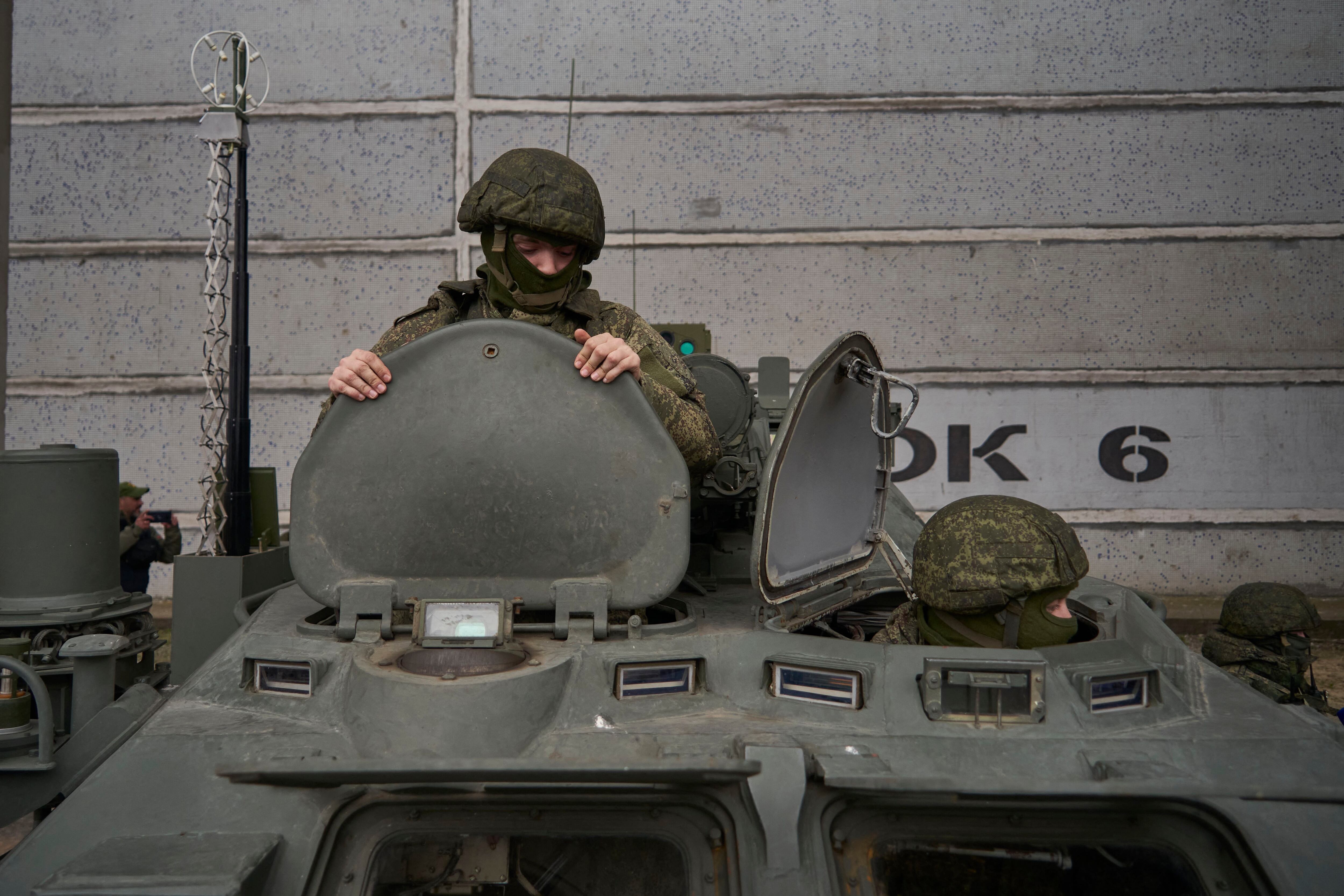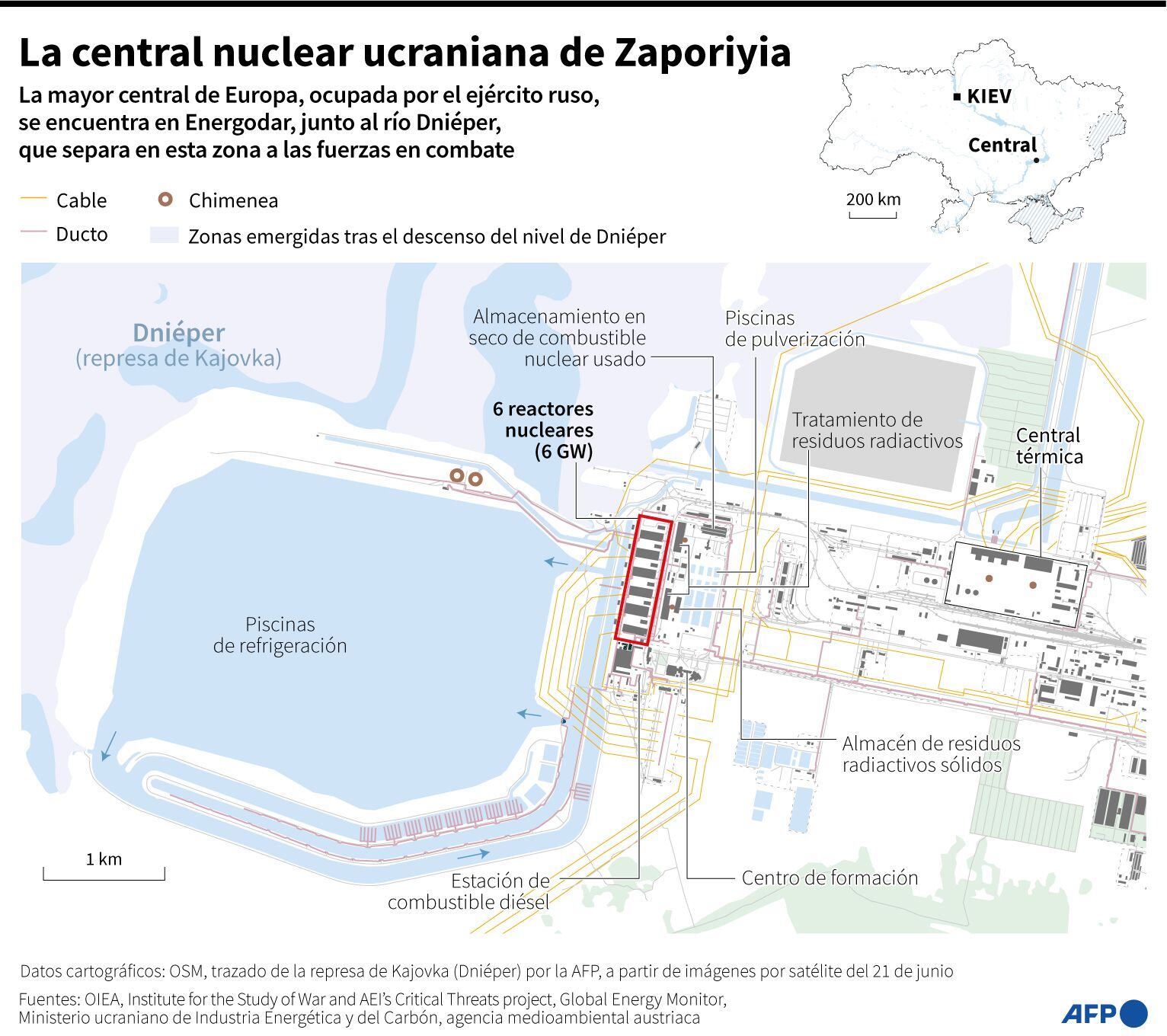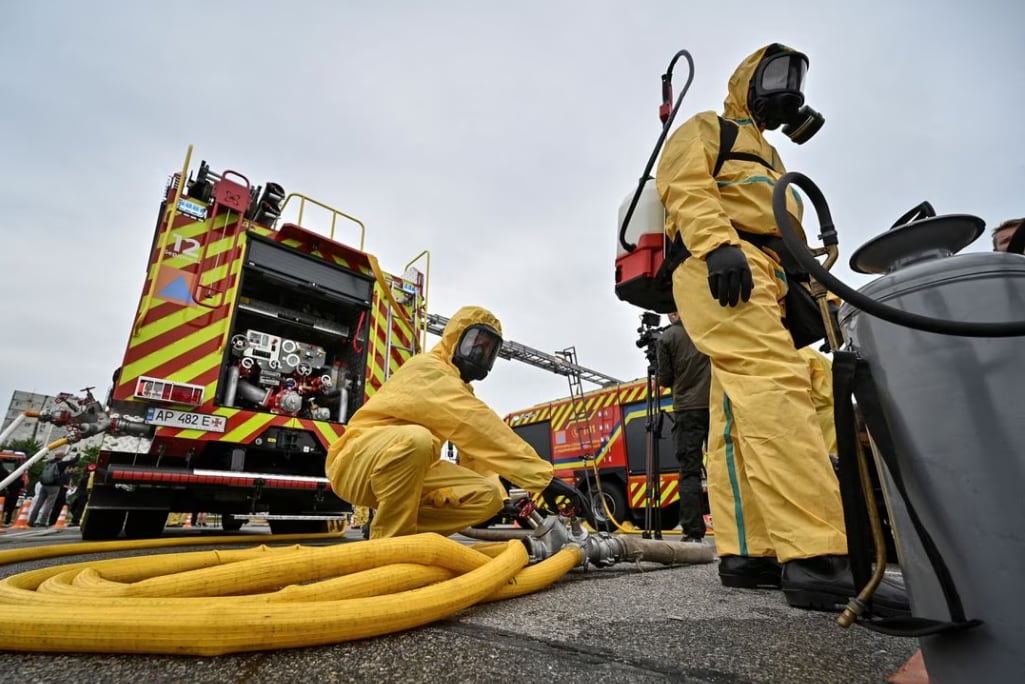The president of Ukraine, Volodymyr Zelenskywarned on Tuesday that Russian troops placed “explosive-like objects” on the roofs of the nuclear power plant in Zaporizhzhya. What the Ukrainian president said set off alarm bells in the world and led the International Atomic Energy Agency (IAEA) to demand greater access to the plant to “confirm the absence of mines or explosives.”
On Wednesday, Zelensky called a meeting of the high command, in which the safety of the country’s nuclear power plants was the first item on the agenda, above the situation on the war front with the counteroffensive released in June.
READ ALSO: Why Ukraine’s counteroffensive is not moving as fast as Zelensky and NATO hoped
Zelensky speculated that the Russians placed “explosive-like objects” on the roofs of Zaporizhzhia “Maybe to simulate an attack on the plant. Maybe they have some other scenario.” Specifically, he was referring to the roofs of reactors 3 and 4 (the plant has 6).
“In any case, the world sees, cannot fail to see, that the only source of danger for the nuclear power plant in Zaporizhzhya It’s Russia and no one else.”he added.
Russia responded warning of a possible “subversive act” by Ukraine of “catastrophic consequences” at the nuclear power plant.
LOOK: Wagner Group: Why is there a war between Yevgeny Prigozhin and Russian Defense Minister Sergei Shoigu?
“All measures must be taken to combat this threat”said the spokesman for the Presidency of Russia, Dmitry Peskov. He accused kyiv of having demonstrated on “multiple occasions” his ability to “be ready for anything”.
“Why would we have explosives there? It is nonsense that seeks to maintain tension around the plant”said Renat Karchaa, an adviser to Rosenergoatom, the Russian operator of nuclear plants.
According to Karchaa, Zelensky “blatantly lies” “Mining the roof of the reactors is a danger, we cannot afford it. Someone in this chaos needs to keep their sanity,” she continued.

the nuclear power plant Zaporizhzhyathe largest in Europe, has been occupied by Russian troops practically since the start of the invasion of Ukraine, in February 2022.
It is located near the southern front of the Ukrainian troops, who have been in the middle of a counteroffensive since the beginning of June. In this phase of the war, the Ukrainians are also aiming to recapture the plant.

At this point, one might wonder what would happen if there really were explosives on the roofs of Zaporizhzhya and these detonate. What happens in this nuclear power plant would be another Chernobyl?
The CNN network recalled that in the month of June, the Zelensky said that his country’s intelligence “received information that Russia is considering a scenario of a terrorist attack at the nuclear power plant in Zaporizhzhya“, and the alleged attack would imply a “radiation leak”.
to what was said by Zelensky followed by an alarming statement from the head of Ukraine’s military intelligence, Kyrylo Budanov, who claimed that the Russians had mined the Zaporizhzhya. “The most horrible thing is that they mine a cooler. If they disable it by blowing it up… chances are there are major problems.”.
Russia denied all these accusations.
But analysts consulted by CNN believe that Russia could be mounting a false flag operation, a military action designed by them to appear to be perpetrated by the adversary.
“This is a rhetorical signal intended to accuse Ukraine of nuclear irresponsibility, and also to deter Ukraine to carry out operations counteroffensive in the occupied province of Zaporizhzhya”, Karolina Hird, a Russia analyst at the Institute for the Study of War, told CNN.

The Ukrainian expert on nuclear safety Olha Kozharna told the German channel DW that if there is mines in important cooling areas of the plant, these are a direct threat to the plant. He added that the water in the cooling pond plays a crucial role. It is used to cool the fuel elements of reactors, so that they do not melt due to overheating.
DW explained that the six reactors at the nuclear power plant have not been working since last fall. Five of them are in cold stop.
Dmitro Humenyuk of Ukraine’s Center for Nuclear and Radiation Safety told DW that the reactors still need to cool down because the fuel elements continue to give off heat, but the water cannot evaporate.
Experts warned that if the cooling system were to be destroyed and the water drained, there would be an accident after eight days.
The sixth reactor is in a hot shutdown. In this reactor, the cooling water can reach up to 280 degrees and would quickly evaporate in the event of a leak. So, according to experts, there would only be 27 hours to avoid nuclear radiation, DW specified.
Would this scenario described by the experts be similar to what happened with the nuclear plant in Chernobyl after the fatal accident of April 1986?

If explosives are detonated, it would “open up a cold reactor, exposing spent fuel to the air and spreading some radiation,” he told CNN. William AlberqueDirector of Strategy, Technology and Arms Control at the International Institute for Strategic Studies.
“A column of smoke would come out of the reactor in which there would be aerosolized radiation. This would create a zone of radiation where there would be a higher chance of cancer over the next 40 years.” but it will not recreate the kind of destruction that was seen after the meltdown of the active power plant of Chernobylaccurate.
“The six reactors of the Zaporizhzhya They don’t look like the reactor at all. Chernobyl and they cannot, CANNOT, have the same type of accident”Cheryl Rofer, a nuclear expert and former researcher at Los Alamos National Laboratory, wrote in a blog, CNN reported.
“Chernobyl had a graphite moderator, and the building it was in was not the heavily reinforced concrete of the nuclear reactors. Zaporizhzhya. The reactors Zaporizhzhya they have hard oxide fuel encapsulated in metal, and are housed in a stainless steel vessel. Chernobyl had no such vessel.”he added.
For William Alberquethe most similar catastrophe scenario would be what happened with the Japanese nuclear power plant in fukushima after the 2011 earthquake and tsunami.
According to Mark Zhelezniak, a professor at Fukushima University’s Institute of Environmental Radiation (IER), “there wouldn’t be a radiation catastrophe because you can’t release radioactive iodine in a turned-off unit.”

He Center for Nuclear and Radiation Safety of Ukraine has been put into two possible scenarios if an explosion occurs in Zaporizhzhya.
In the first scenario, if the meter-thick protective shell of the reactor remains intact and only the interior melts, an area of 2.5 kilometers around the nuclear power plant would be exposed to radiation.
“Basically it would only affect plant personnel. In this case, people should only stay outside, within a protection zone. Taking iodine would not be necessary ”, He said Center for Nuclear and Radiation Safety of Ukraine it’s a statement.
The second scenario would be a reactor accident with the entire protective layer damaged. “In this scenario, radiation exposure will affect a larger area and have worse consequences. The area of contamination depends on the climatic conditions”said the aforementioned center.
DW reported that according to calculations of Ivan Kovaletsexpert in environmental informatics from the National Academy of Sciences of Ukraine, in the worst scenario, an area of up to 20 kilometers around the power plant could be affectedThis depends on the strength and direction of the wind. The immediate evacuation of the population will be necessary.
The emergency can extend up to 550 kilometers away from the plant, with certain consequences for health, added Kovalets. But he stressed that there would be no need for immediate evacuation orders at that distance.

He International Atomic Energy Agency (IAEA) said Wednesday there were no visible signs of mines or explosives at the plant Zaporizhzhyabut asked for additional access to the site to confirm it.
“With the tension and military activities intensifying in the area, our experts must be able to verify the facts on the ground, independently and objectively”declared in a statement the head of that UN agency, Rafael Grossi.
He added that it is “crucial to clarify the current situation” in the face of accusations of “provocations” or “attacks” by both sides at that plant.
He also said that in recent days the staff of the IAEA inspected various facilities at the plant, “so far without observing traces of mines or explosives.”
He specified that the inspectors could not access the roofs of reactors 3 and 4 or some areas of the plant’s cooling system.
“With tension and military activities increasing in the region where this major nuclear power plant is located, our experts must be able to verify the facts on the ground,” Grossi stressed in a statement.
Source: Elcomercio
I am Jack Morton and I work in 24 News Recorder. I mostly cover world news and I have also authored 24 news recorder. I find this work highly interesting and it allows me to keep up with current events happening around the world.

:quality(75)/cloudfront-us-east-1.images.arcpublishing.com/elcomercio/RLCQRLQNY5D2XOXNA66HJHC2K4.jpg)

:quality(75)/cloudfront-us-east-1.images.arcpublishing.com/elcomercio/ZK6BFQOZ5BFQRGISZUHZM3ZR6U.jpg)
:quality(75)/cloudfront-us-east-1.images.arcpublishing.com/elcomercio/Y6HCBDCE4NCTDKFIE7PEJI6TDA.jpg)
:quality(75)/cloudfront-us-east-1.images.arcpublishing.com/elcomercio/CAZVRR46TJAQJDQYEHP5VH5WMY.jpg)
:quality(75)/cloudfront-us-east-1.images.arcpublishing.com/elcomercio/Z5DOMID4JZG5VID3KK45B666RA.png)
